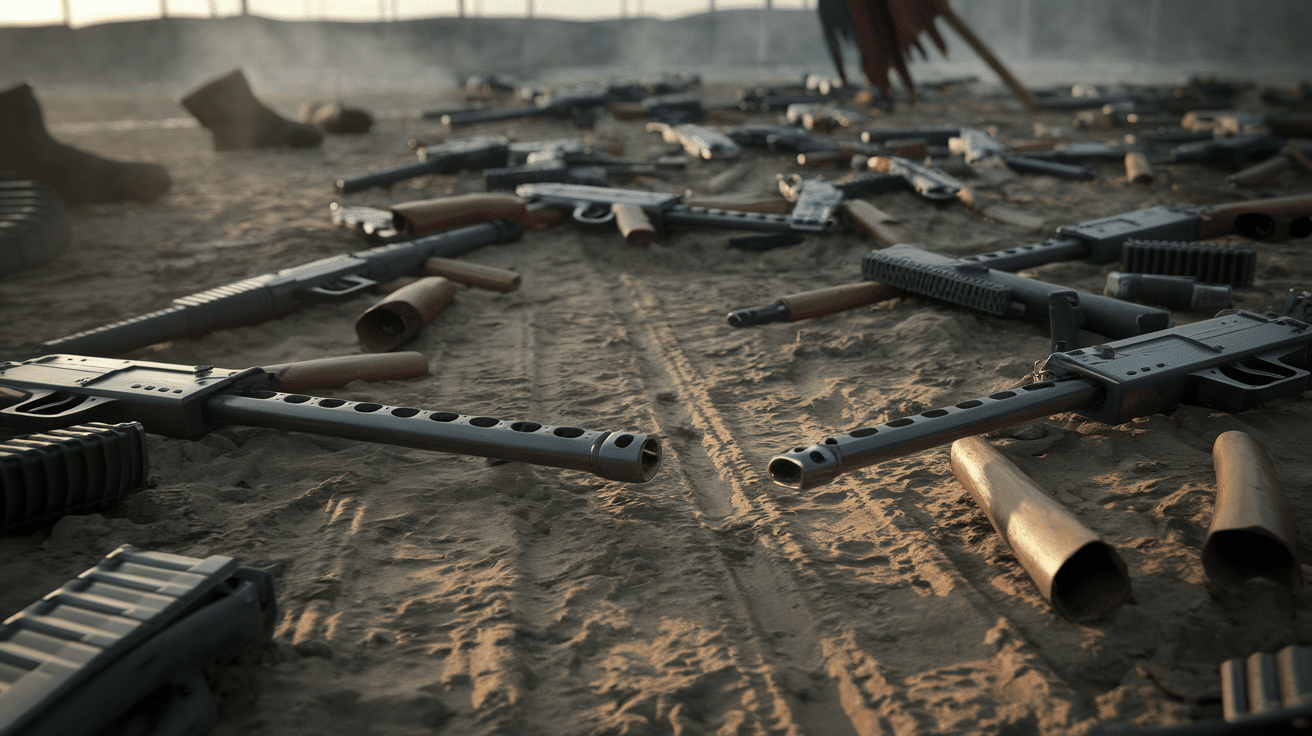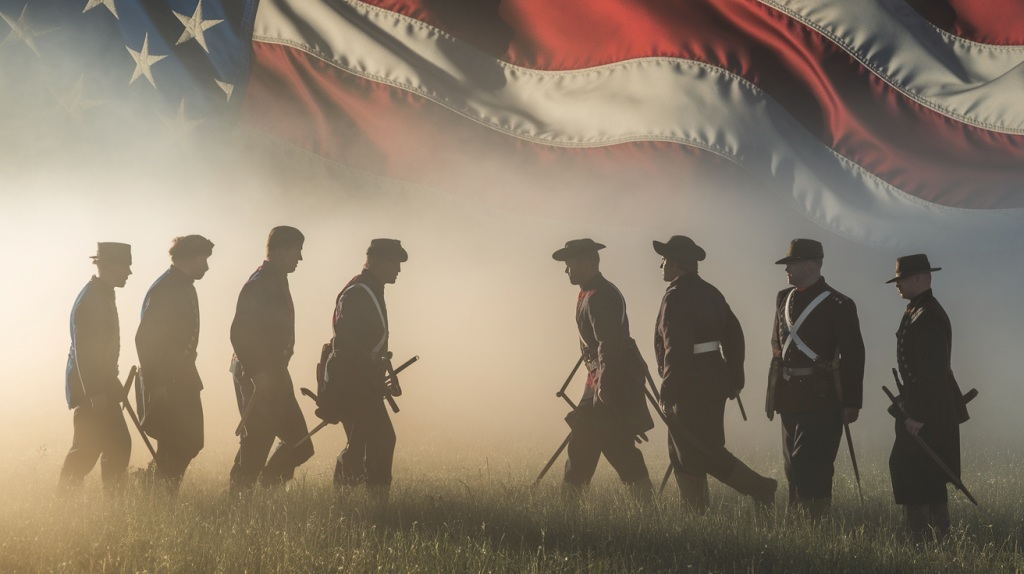The American Civil War, fought from 1861 to 1865, was one of the most important turning points in U.S. history. It shaped the country’s future, ended slavery, and left deep scars that are still felt today.
Many people know about famous battles and leaders, but there’s much more to this story.
From unexpected inventions to personal sacrifices, the war is full of surprising facts that offer a deeper look into this powerful chapter of the past.
So, let’s look at some lesser-known but interesting details that will help you better understand the Civil War and its lasting impact.
Interesting Facts About the American Civil War
The Civil War’s impact went far beyond the battlefield, shaping America’s future through remarkable events, personal sacrifices, and advancements that continue to impact the country today.
1. Highest Number of American Casualties in Any Conflict
The American Civil War resulted in over 620,000 soldier deaths, which is more than American losses in World War I and World War II combined.
This figure represents approximately 2% of the American population at that time, which would be equal to about 6-7 million people today. Recent research suggests the actual number might be closer to 750,000.
2. Brothers Often Fought Against Brothers
Family against family. Father against son. The Mason-Dixon line cut through blood ties.
- The Crittenden family: Thomas (Union general) fought against his brother George (Confederate general)
- Mary Lincoln had four brothers who wore Confederate gray
- Some units encountered their relatives across the battlefield
3. Women Served as Soldiers by Hiding Their Identity
Hundreds of women concealed their gender to serve in both armies. Their stories remain some of the most fascinating accounts of the war:
Sarah Emma Edmonds became “Franklin Thompson” with the Michigan infantry. Frances Clayton fought in 18 battles with a Minnesota unit.
These women cut their hair, bound their chests, and adopted masculine mannerisms to fight alongside men.
4. Last Shot of The Civil War Happened Months After It Officially Ended
The Strange Case of the CSS Shenandoah
This Confederate warship continued attacking Union ships in the Pacific Ocean for months after Appomattox. Why?
They simply didn’t know the war had ended! The final shot rang out in June 1865, almost two months after the formal conclusion of hostilities. When they finally learned the truth, the ship’s captain fled to England to avoid charges of piracy.
5. Medical Advances Occurred Amid Terrible Conditions
The Civil War became a catalyst for medical progress:
- Creation of ambulance corps
- Improved surgical techniques
- Better documentation of cases
- Recognition of psychological trauma
These changes formed the foundation for modern battlefield medicine despite the horrible conditions that prompted them.
6. A. Lincoln Created the Secret Service on The Day of His Assassination
April 14, 1865 — A fateful day:
- Morning: Lincoln signed legislation creating the Secret Service
- Evening: He was shot at Ford’s Theatre
The tragic irony? The Secret Service wasn’t meant to protect presidents. Its original mission was to fight currency counterfeiting.
However, the presidential protection became part of their duties in 1901, following the assassination of William McKinley.
7. The Confederacy Nearly Managed to Get European Powers Involved
The South came dangerously close to securing European allies through cotton diplomacy. The critical moment arrived during the Trent Affair (1861):
- Union forces seized Confederate diplomats from a British ship
- Britain prepared for a possible war against the Union
- Only careful negotiations prevented international escalation
What if Britain had joined the Confederate cause? The entire outcome might have changed.

8. Baseball Grew in Popularity During the War
In 1863, Union soldiers gathered in camps to play what would become America’s pastime. The Brooklyn team took the bat first as swift, accurate pitching met excellent batting and catching. Cheers filled the air as good plays followed one another.
The war helped convert a local game into a national passion as soldiers from different regions shared their love for baseball, which they then took home when the fighting ended.
You’re right, let me create more varied content with a wider range of topics and presentation styles.
9. Camels Served in Texas Military Units
- The U.S. Army imported camels before the war for use in the Southwest.
- When conflict erupted, some Confederate units in Texas continued using these “ships of the desert” to carry supplies across arid terrain.
- The experiment ended after the war, with some camels escaping into the wild.
10. Wartime Coffee Substitutes Included Chicory and Acorns
When coffee beans became scarce in the South, people created alternatives from:
- Roasted chicory root
- Burned corn kernels
- Ground acorns
- Boiled dandelion roots.
11. The Only Known Civil War Battle in Arizona Took Place at Picacho Peak
- The westernmost skirmish occurred on April 15, 1862, when Union cavalry from California clashed with Confederate scouts from Texas.
- Although small (with just 24 men participating), this fight demonstrated how the conflict extended across the continent.
12. The Failed Plot Against Lincoln Included Attacks on Cabinet Members
John Wilkes Booth’s conspiracy went beyond killing the president.
His accomplices were supposed to murder Vice President Andrew Johnson and Secretary of State William Seward simultaneously.
While Lincoln died, Seward survived multiple stab wounds, and the man assigned to kill Johnson lost his nerve in a hotel bar.
13. A Twelve-Year-Old Boy Received a Confederate Military Pension
At age 12, Susie King Taylor escaped slavery and became a laundress and nurse for the 33rd U.S. Colored Troops.
She taught soldiers to read in secret night classes, cleaned their weapons, and treated wounds, yet couldn’t receive a pension as a woman.
Meanwhile, a 12-year-old drummer boy from Georgia who served three months received Confederate benefits for life.
14. Mark Twain’s Brief Confederate Service Ended with Desertion
- Samuel Clemens (later known as Mark Twain) joined a local Confederate militia but quit after two weeks.
- “I was a soldier for two weeks once in the beginning of the war, and was hunted like a rat the whole time,” he later wrote.
- This short military career later impacted his skepticism toward war glory.
15. A Message in a Bottle Helped Union Forces Occupy Vicksburg
In 1862, a Union soldier sealed battlefield maps in a bottle and tossed it into the Mississippi River near Vicksburg. Confederate soldiers found it, but couldn’t crack the simple code.
When Union forces recaptured the bottle months later, the maps proved crucial in planning the successful Vicksburg campaign.
Conclusion
The Civil War was a time of great hardship and change, impacting the lives of millions. From the tragic loss of over 620,000 lives to the surprising involvement of camels in the military, the war affected more than just the battlefield.
These lesser-known facts show that the Civil War wasn’t just about generals and battles. It changed America in ways we still feel today.
Pro Tip: If you want to learn more about history, sometimes it’s the small, unexpected stories that give you the best insight into the past.
Look beyond the famous battles and names to enjoy the everyday moments that shaped the country.















